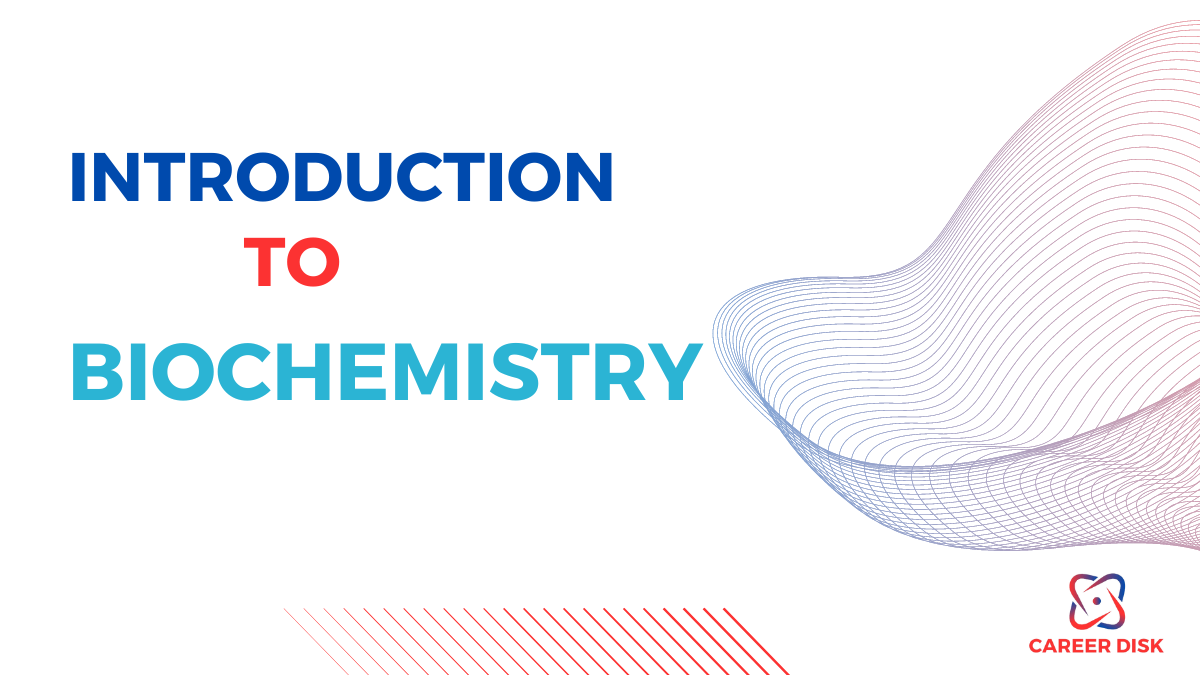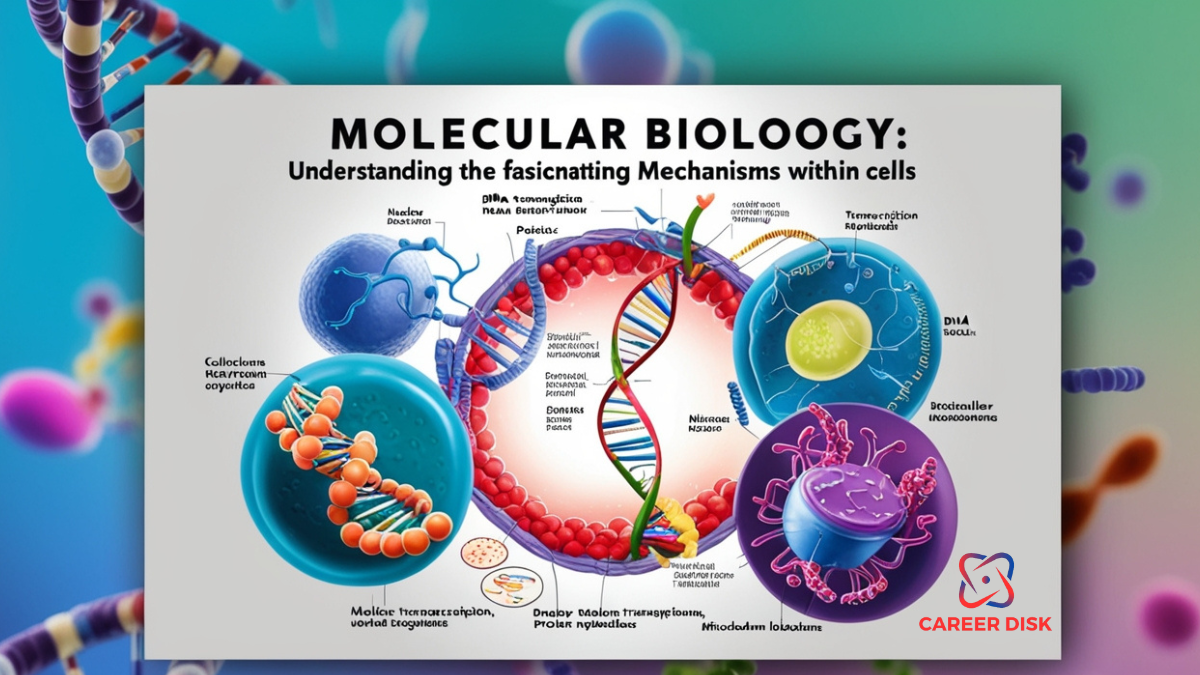
Did you know that every single action your body performs, from the beating of your heart to the firing of neurons in your brain, is governed by the intricate dance of molecules within your cells?
Biochemistry is the captivating science that unveils the secrets behind these processes, offering a glimpse into the inner workings of life itself. Imagine peering into the molecular machinery that powers existence, where every reaction is a symphony of atoms orchestrating the miracle of life.
In this comprehensive article, we will delve into the captivating world of biochemistry, exploring its fundamental concepts and wide-ranging applications.
We’ll begin by unraveling the mysteries of biochemistry, from its definition to its crucial role in understanding life at a molecular level.
Throughout the post, we’ll cover the fundamentals of biochemistry, including the building blocks of life such as proteins, lipids, carbohydrates, and nucleic acids, as well as key biochemical processes like enzyme catalysis, metabolism, cellular respiration, and photosynthesis.
As we progress, we’ll examine the diverse applications of biochemistry in various fields, including medicine, biotechnology, and agriculture, highlighting its importance in drug discovery, genetic engineering, and sustainable farming practices.
We will explore emerging trends and technologies in biochemistry, discussing potential areas of research and innovation that hold promise for the future.
By the end of this post, you will gain a deeper understanding of the significance of biochemistry in unraveling the mysteries of life and shaping the advancements that drive scientific progress and societal impact.
A Brief Overview of What Biochemistry is and its Importance in Understanding Life.
Biochemistry is the study of the chemical processes and substances that occur within living organisms. It delves deep into the molecular structures of proteins, lipids, carbohydrates, and nucleic acids, unraveling their roles in cellular function, metabolism, and genetics.
Understanding biochemistry is crucial for deciphering the complexities of life, from the molecular mechanisms of diseases to the development of life-saving drugs.
Biochemistry is life’s language, offering profound insights into the fundamental processes that sustain all living organisms.
Fundamentals of Biochemistry
Definition of Biochemistry:
Biochemistry is the scientific discipline that explores the chemical processes and substances occurring within living organisms. It examines the molecular mechanisms underlying biological molecules’ structure, function, and regulation, such as proteins, carbohydrates, lipids, and nucleic acids.
At its core, biochemistry seeks to understand how these molecules interact and contribute to the processes essential for life, from cellular metabolism to genetic expression.
The Role of Biochemistry in Biology and Medicine:
Biochemistry is crucial in biology and medicine, revealing the molecular intricacies of life and health. In biology, it underpins our comprehension of cellular processes like metabolism and gene expression.
In medicine, biochemistry is vital for diagnosing diseases early, creating targeted treatments, and designing drugs that modulate disease-related pathways. It also enhances drug optimization by informing pharmacokinetics and pharmacodynamics.
Key Concepts: Molecules, Cells, Metabolism, and Genetics:
Molecules
Biochemistry examines the structure, properties, and interactions of biological molecules, including proteins, carbohydrates, lipids, and nucleic acids.
These molecules are the building blocks of cells and tissues, and their precise arrangement and function are crucial for maintaining cellular integrity and functionality.
Cells
Cells are life’s basic structural and functional units, and biochemistry elucidates the molecular mechanisms that govern cellular processes.
This includes the regulation of gene expression, protein synthesis, membrane transport, and cell signaling, all of which are essential for cell growth, division, and specialization.
Metabolism
Metabolism refers to the complex network of biochemical reactions that occur within cells to convert nutrients into energy and essential molecules.
Biochemistry investigates metabolic pathways, such as glycolysis, the citric acid cycle, and oxidative phosphorylation, which generate adenosine triphosphate (ATP) the primary energy currency of cells as well as biosynthetic pathways that produce molecules necessary for cell growth and maintenance.
Genetics
Genetics studies heredity and variation, while biochemistry uncovers the molecular basis of genetic processes like DNA replication and gene expression, including DNA, RNA, and proteins involved in genetic mechanisms. Understanding these processes is crucial for decoding the genetic code, inheritance, and disease genetics.

The Building Blocks of Life:
Proteins
Proteins are essential for cell structure and function. They are made up of amino acids joined by peptide bonds and serve various roles, such as enzyme catalysis, structural support, and immune defense. The hierarchical structure of proteins determines their function.
Lipids
Lipids are diverse hydrophobic molecules that include fats, oils, phospholipids, and steroids. They serve various bodily functions, such as energy storage, insulation, structural components of cell membranes, and signaling molecules. Lipids are characterized by their insolubility in water and their solubility in nonpolar solvents.
There are several types of lipids, including triglycerides (fats and oils), phospholipids, and steroids. Triglycerides store energy in adipose tissue and serve as a source of metabolic fuel.
Carbohydrates
Carbohydrates are made up of carbon, hydrogen, and oxygen in a 1:2:1 ratio and are crucial sources of energy and structural components in cells.
They are divided into monosaccharides (single sugars such as glucose), disaccharides (two sugars like sucrose), and polysaccharides (complex sugars such as starch, glycogen, and cellulose).
Monosaccharides and disaccharides provide quick energy, while polysaccharides act as energy reserves (starch in plants, glycogen in animals) and provide structural support (cellulose in plant cell walls).
Nucleic Acids
Nucleic acids, made of nucleotide monomers, store and transmit genetic information. The two main types are DNA, encoding genetic instructions, and RNA, involved in protein synthesis. Understanding nucleic acids is crucial for insights into cellular function and genetic inheritance.
Biochemical Processes
Enzymes: Catalysts of Life
Enzymes are biological catalysts that speed up chemical reactions in cells by reducing the energy needed for the reaction. They are essential for various processes in living organisms and are highly specific, remaining unchanged and reusable during reactions.
Functions
– Enzyme function governed by three-dimensional structure determined by amino acid sequence
– Enzymes catalyze reactions by binding to specific substrate molecules at active sites
– Substrate binding induces conformational change in enzyme structure, facilitating substrate conversion into products
– Enzyme activity regulated by factors including substrate concentration, pH, temperature, and presence of inhibitors or activators
Metabolism: Overview of Catabolism and Anabolism
Metabolism involves catabolism, breaking down complex molecules for energy, and anabolism, synthesizing complex molecules.
Cellular Respiration: ATP Production and Energy Metabolism
Cellular respiration converts organic molecules like glucose into ATP through glycolysis, the citric acid cycle, and oxidative phosphorylation. Glycolysis breaks glucose into pyruvate in the cytoplasm, producing ATP and NADH. The citric acid cycle in the mitochondria further oxidizes pyruvate, generating more ATP and reducing equivalents. Oxidative phosphorylation in the inner mitochondrial membrane uses these equivalents to create a proton gradient, driving ATP synthesis. This process supplies the ATP necessary for cellular activities.
Photosynthesis: The Process of Converting Light Energy into Chemical Energy
Photosynthesis is the process by which plants convert sunlight into energy in chloroplasts. It has two stages: light-dependent reactions and light-independent reactions (Calvin cycle). This process is essential for life on Earth.
Applications of Biochemistry
Medicine:
Biochemistry is essential in medicine, influencing drug discovery, diagnostics, and treatment. In drug discovery, biochemists identify drug targets and screen compounds for efficacy and safety. In diagnostics, techniques like ELISA, PCR, and mass spectrometry detect disease biomarkers. In treatment, biochemistry aids in developing targeted therapies and improves drug delivery.
Biotechnology:
Biochemistry is crucial in biotechnology, advancing genetic engineering, bioremediation, and biofuels. Genetic engineering modifies DNA for enhanced crop traits and disease resistance. Bioremediation uses engineered microbes to detoxify pollutants. Biochemistry optimizes biofuel production from biomass, algae, or waste materials through fermentation and lipid extraction, enhancing yield and efficiency.
Agriculture:
Biochemistry is essential in agriculture, driving genetic modification, crop improvement, and pest control. In genetic modification, biochemists introduce genes for traits like insect resistance and herbicide tolerance into crops. Crop improvement uses biochemical markers to develop plants with traits like drought tolerance and disease resistance. Pest control employs biopesticides and strategies like RNA interference for environmentally sustainable pest management.
More reading at https://eduinput.com/importance-of-biochemistry/
Future Perspectives
Emerging Trends and Technologies in Biochemistry
The field of biochemistry is constantly evolving due to advances in technology, interdisciplinary collaborations, and innovative research methods. Various emerging trends and technologies are shaping the future of biochemistry.
1. Omics Technologies: High-throughput omics technologies enable comprehensive profiling of biological molecules and their interactions, providing insights into cellular processes, disease mechanisms, and biomarker discovery.
2. Structural Biology: Structural biology techniques like X-ray crystallography, NMR spectroscopy, and cryo-EM allow detailed visualization of biomolecular structures, aiding in drug design and protein engineering.
3. Synthetic Biology: Synthetic biology combines principles from biology, engineering, and computer science to design and construct novel biological systems with customized functions. This interdisciplinary field has promise for engineering biological circuits, biosensors, and microbial factories for biomanufacturing.
4. CRISPR-Based Genome Editing: Synthetic biology combines principles from biology, engineering, and computer science to design and construct novel biological systems with customized functions. This interdisciplinary field has promise for engineering biological circuits, biosensors, and microbial factories for biomanufacturing.
5. Single-Cell Analysis: Single-cell analysis techniques allow researchers to investigate heterogeneity within cell populations and characterize individual cells based on their molecular profiles. This approach offers insights into developmental processes, disease progression, and cellular responses to environmental stimuli, with implications for precision medicine and regenerative therapies.
Potential Areas of Research and Innovation
The future of biochemistry holds immense potential for addressing pressing challenges in health, environment, and sustainability. Some potential areas of research and innovation include:
1. Personalized Medicine: Advances in genomic medicine, molecular diagnostics, and therapeutic targeting are paving the way for personalized approaches to disease prevention, diagnosis, and treatment. Tailoring medical interventions to individual genetic profiles holds promise for improving patient outcomes and reducing healthcare costs.
2. Drug Discovery and Development: The integration of computational modeling, machine learning, and artificial intelligence with experimental approaches is accelerating the drug discovery process and facilitating the development of targeted therapeutics for complex diseases, such as cancer, neurodegenerative disorders, and infectious diseases.
3. Biotechnology and Bioengineering: Innovations in biotechnology and bioengineering are driving the development of sustainable solutions for food, energy, and environmental challenges. This includes bioproduction of renewable fuels, bio-based materials, and biodegradable plastics, as well as bioremediation of contaminated environments and wastewater treatment.
4. Regenerative Medicine: Biochemical insights into stem cell biology, tissue engineering, and regenerative therapies offer promising avenues for repairing and replacing damaged tissues and organs. Emerging technologies, such as organ-on-a-chip platforms and 3D bioprinting, enable the creation of functional tissue constructs for disease modeling, drug testing, and transplantation.
Importance of Continued Advancements in Biochemistry for Society
Continued advancements in biochemistry are essential for addressing global health challenges, promoting environmental sustainability, and driving economic growth. Biochemical research and innovation have far-reaching implications for society, including:
1. Improving Health and Well-being: Breakthroughs in biochemistry contribute to the development of novel therapeutics, vaccines, and diagnostics for preventing and treating diseases. By understanding the molecular basis of health and disease, biochemistry enables precision medicine approaches that consider individual genetic, environmental, and lifestyle factors.
2. Safeguarding the Environment: Biochemical solutions play a crucial role in mitigating environmental pollution, conserving natural resources, and promoting sustainable development. Bioremediation technologies, renewable energy sources, and biobased materials offer eco-friendly alternatives to traditional industrial processes, reducing carbon emissions and ecological footprints.
3. Fostering Innovation and Economic Growth: Investments in biochemistry research and education drive innovation and entrepreneurship, spurring technological advancements and creating opportunities for economic growth and job creation. Bio-based industries, such as biopharmaceuticals, biotechnology, and bioenergy, contribute to economic diversification and global competitiveness.
Read further: https://www.news-medical.net/life-sciences/Biochemistry-in-Everyday-Life.aspx
CONCLUSION
In closing, let’s continue to celebrate the remarkable strides made in biochemistry and embrace the endless possibilities it holds for the future. I am grateful for the dedication of researchers, educators, and innovators who continuously enrich our understanding of biochemistry and its profound impact on our world. Together, let’s look forward to the exciting discoveries and advancements that await us on this captivating scientific journey. Thank you for being part of this incredible pursuit of knowledge and progress.
– Fundamentals of Biochemistry: We began by delving into the building blocks of life, including proteins, lipids, carbohydrates, and nucleic acids, and their roles in cellular structure, function, and metabolism.
– Biochemical Processes: We examined essential biochemical processes such as enzyme catalysis, metabolism, cellular respiration, and photosynthesis, which are fundamental to life and energy flow in living organisms.
– Applications of Biochemistry: We explored how biochemistry contributes to medicine, biotechnology, and agriculture, driving advancements in drug discovery, genetic engineering, crop improvement, and environmental sustainability.
– Future Perspectives: Lastly, we discussed emerging trends and technologies in biochemistry, potential areas of research and innovation, and the importance of continued advancements in biochemistry for society’s well-being and future prosperity.
Biochemistry stands at the intersection of biology, chemistry, and medicine, offering profound insights into the molecular mechanisms of life and its applications in addressing societal challenges. By understanding the intricacies of biochemical processes, we gain deeper insights into the complexities of living organisms and their interactions with the environment.
Discover more from Career Disk
Subscribe to get the latest posts sent to your email.





